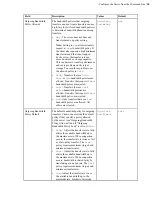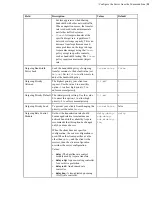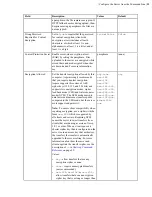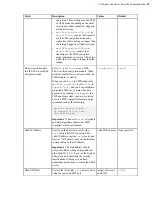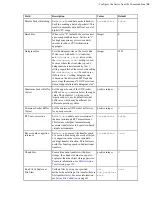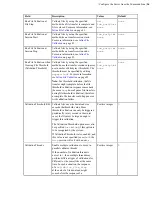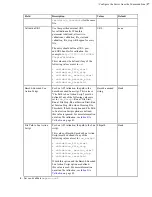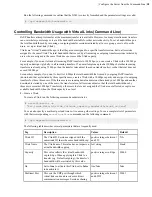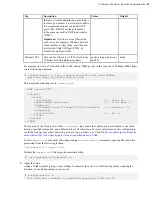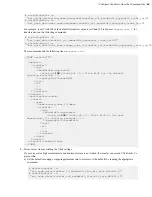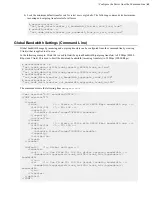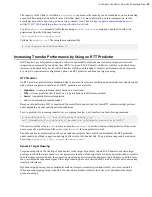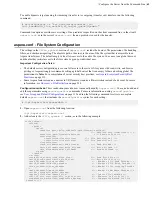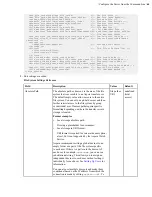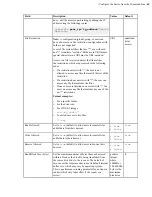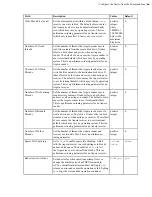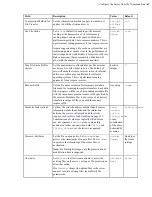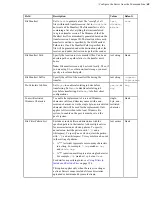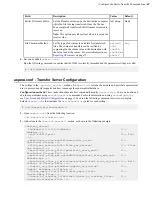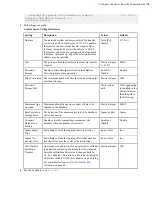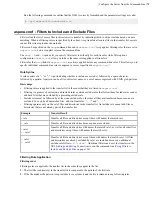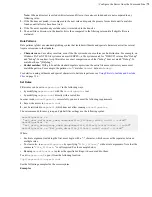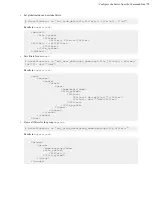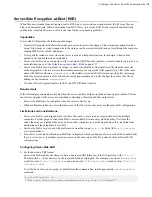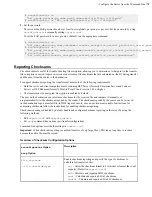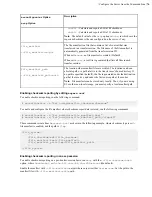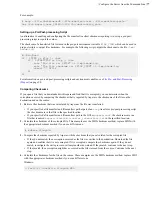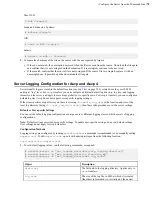
| Configure the Server from the Command Line |
63
To enable dynamic target queuing for incoming (transfer_in) or outgoing (transfer_out) transfers, run the following
command:
# asconfigurator -x "set_node_data;transfer_{in|
out}_bandwidth_flow_network_rc_target_queue,dynamic"
Command line options override server settings. If no predictor is specified on the client command line, in the client's
aspera.conf
, or in the server's
aspera.conf
, then no predictor is used for the transfer.
aspera.conf - File System Configuration
The settings in the
<file_system>
section of
aspera.conf
include the docroot, file permissions, file handling,
filters, and checksum reporting. The absolute path, or docroot, is the area of the file system that is accessible to an
Aspera transfer user. The default empty value allows access to the entire file system. You can set one global docroot
and then further restrict access to the file system by group or individual user.
Important Configuration Notes:
• The default server configuration gives users full access to the server's file system with read, write, and browse
privileges. Aspera strongly recommends setting a global docroot that is an empty folder and setting global file
permissions to
false
. For a compilation of server security best practices, see
Aspera Ecosystem Security Best
on page 335.
• Some Aspera features require a docroot in URI format or require a file restriction instead of a docroot. For more
information, see
on page 334.
Configuration methods:
These instructions describe how to manually modify
aspera.conf
. You can also add and
edit these parameters using
asconfigurator
commands. For more information on using
asconfigurator
,
User, Group and Default Configurations
on page 315 and run the following command to retrieve a complete
default
aspera.conf
that includes the
asconfigurator
syntax for each setting:
# /opt/aspera/bin/asuserdata -+
1.
Open
aspera.conf
from the following location:
/opt/aspera/etc/aspera.conf
2.
Add or locate the
<file_system />
section, as in the following example.
<file_system>
<access>
<paths>
<path>
<absolute peer_ip="
ip_address
">
/path/$(name)
</absolute>
<!-- Absolute Path (conditional) -->
<absolute>
/path/$(name)
</absolute> <!-- Absolute Path -->
<restrictions>
<restriction></restriction> <!-- File Restriction 1 -->
<restriction></restriction> <!-- File Restriction 2 -->
</restrictions>
<read_allowed>true</read_allowed> <!-- Read Allowed -->
<write_allowed>true</write_allowed> <!-- Write Allowed -->
<dir_allowed>true</dir_allowed> <!-- Browse Allowed -->
</path>
</paths>
</access>
<read_block_size>0</read_block_size> <!-- Read Block Size -->
<write_block_size>0</write_block_size> <!-- Write Block Size -->
<read_threads>0</read_threads> <!–- Number of I/O Read Threads -->
<write_threads>0</write_threads> <!–- Number of I/O Write Threads -->
<scan_threads>0</scan_threads> <!-- Number of Dir Scanning Threads
-->
<meta_threads>0</meta_threads> <!-- Number of Metadata Threads -->
<worker_threads>0</worker_threads>
<sparse_file>false</sparse_file> <!-- Sparse File Checking -->
<fail_on_attr_error>yes</fail_on_attr_error> <!-- Behavior on Attr Error -->
<compression_method>lz4</compression_method> <!-- Compression Method for File
Transfer -->


